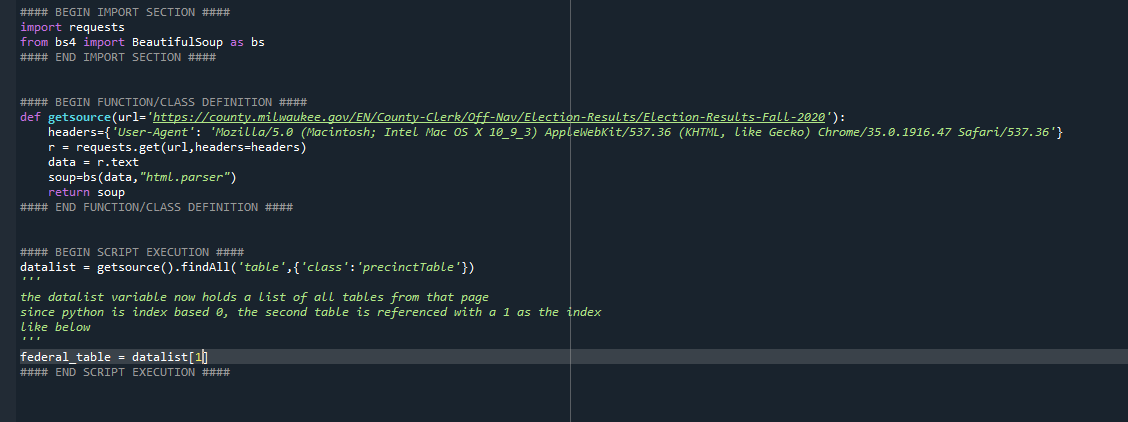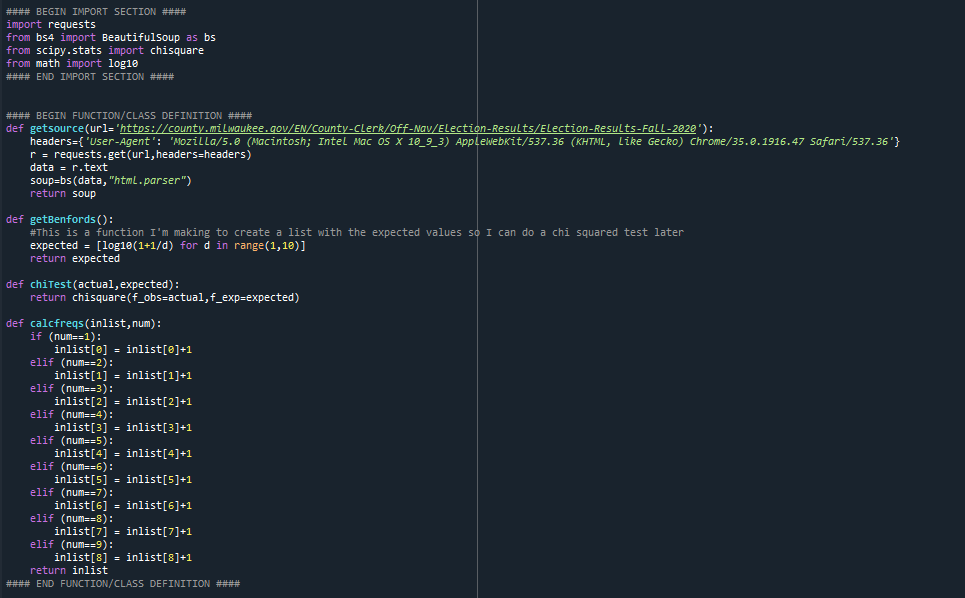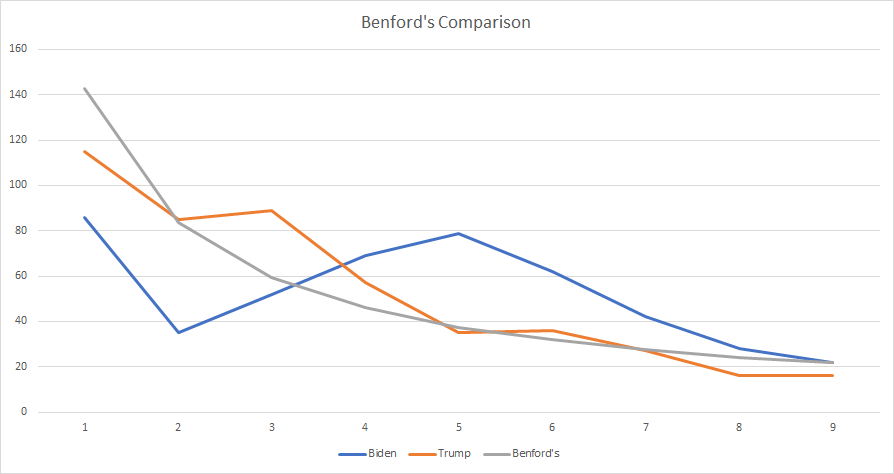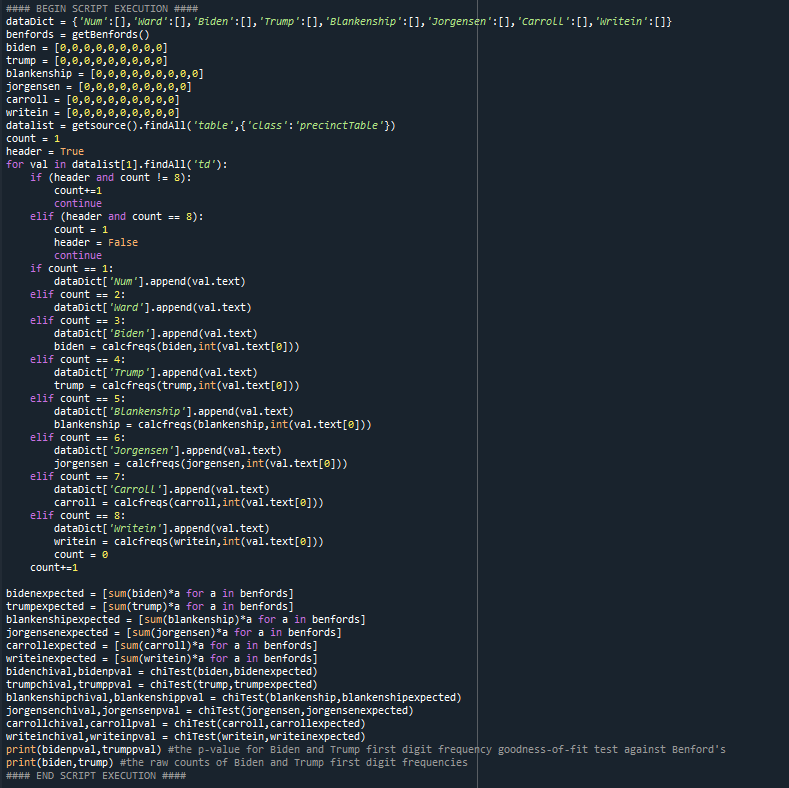I am making these tweets to explain in one place some analysis that was done last night.
1 - I was asked offline about doing Benford's on election data. I explained that this is common and a useful way to detect anomalies in data that are driven by artificial process (e.g. fraud)
1 - I was asked offline about doing Benford's on election data. I explained that this is common and a useful way to detect anomalies in data that are driven by artificial process (e.g. fraud)
2 - My student then pointed me towards a tweet that was exploring this type of analysis (but they hadn't done Benford's). So I chimed in.
3 - However, I did not know what data they used so I found a source for the context they referenced. However, I could not initially find write-ins versus non-write-ins, so I looked at candidate counts.
4 - I then wrote a quick script to gather that data, here is an example of what the data gathering portion of this process looked like. 

5 - With this data now available to look at in code, I created a process to analyze first digit conformity to the Benford's distribution. This is a test that is often conducted via Chi-squared.
7 - Now that I had the data and the distribution, I simply needed to perform the test. To do that, I leveraged scipy's chisquare. However, prior to doing that, you need to produce the expected result values (not just the percentages. But this is as simple.
8 - To do that, you take the total number of observations (number of numbers that the first digit counts are derived from) and multiply them by the Benford's distribution frequencies accordingly. This looks like this: 

9 - The final process, put together, has some additional code to handle data and count the digits from that webpage (comes in 2 parts, first script setup and function definition, then the script on next tweet): 

11 - In the end, Biden's vote data from that page is far more anomalous than Trump's. Here is what it looks like visually: 

12 - And here are the raw numbers (1 to 9):
Biden: [86, 35, 52, 69, 79, 62, 42, 28, 22]
Trump: [115, 85, 89, 57, 35, 36, 27, 16, 16]
Biden: [86, 35, 52, 69, 79, 62, 42, 28, 22]
Trump: [115, 85, 89, 57, 35, 36, 27, 16, 16]
13 - Here are the respective p-values:
Biden 1.5076774999383611e-27
Trump 0.00048111250713426005
Biden 1.5076774999383611e-27
Trump 0.00048111250713426005
14 - What is notable is the extreme difference in their p-values. The drawback to this analysis is that there is a Better test for Benford's goodness of fit. It is the Watson version of the Cramer von Mises test (U2). You can read about why it is better here (next message)
15 - Here:
Lesperance, M., Reed, W. J., Stephens, M. A., Tsao, C., & Wilton, B. (2016). Assessing Conformance with Benford’s Law: Goodness-Of-Fit Tests and Simultaneous Confidence Intervals. PLoS ONE, 11(3). doi.org/10.1371/journa…
Lesperance, M., Reed, W. J., Stephens, M. A., Tsao, C., & Wilton, B. (2016). Assessing Conformance with Benford’s Law: Goodness-Of-Fit Tests and Simultaneous Confidence Intervals. PLoS ONE, 11(3). doi.org/10.1371/journa…
16 - What is undeniable is that the first digit frequencies of Biden's vote totals is extremely anomalous in comparison to Trump's.
• • •
Missing some Tweet in this thread? You can try to
force a refresh






